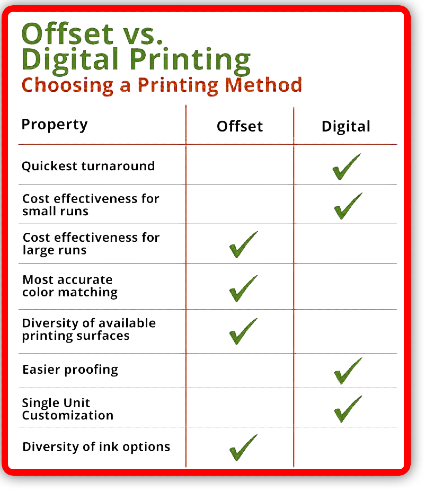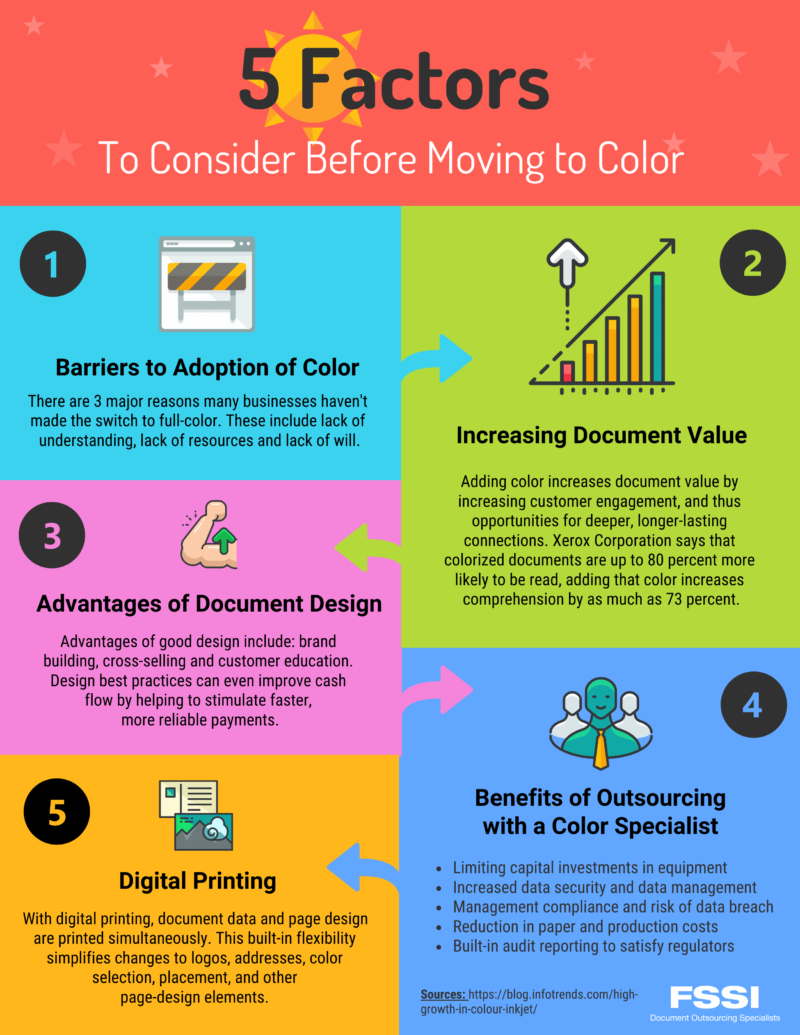The Main Principles Of Digital Printing
The Main Principles Of Digital Printing
Blog Article
The Ultimate Guide To Digital Printing
Table of Contents9 Simple Techniques For Digital PrintingNot known Incorrect Statements About Digital Printing More About Digital PrintingDigital Printing Fundamentals ExplainedDigital Printing for BeginnersDigital Printing Things To Know Before You Get This
Variable data printing, such as straight mail with customized codes and addresses, is ideally fit for electronic printing. Digital quick printing just needs 4 steps of layout, review, printing and binding to obtain every little thing done. Digital quick printing has an unparalleled benefit: print on demand.According to PMMI, digital printing allows brand names and makers to react swiftly to customer needs while enhancing the supply chain, decreasing warehousing price and waste, and taking pleasure in faster time to market. That all sounds great, yet just how does this modern technology do all that? The major differentiator of these technologies is that there are no set up fees and no plates with electronic printing.
Fascination About Digital Printing
This results in quicker turn-around time and decreases cost when utilizing electronic printing.
Digital printing is extremely flexible, so it's very easy to make adjustments to the package design rapidly. It all goes back to the plates.
Much more supply can imply even more waste down the roadway. With conventional printing approaches, short-run printing is simply not possible. Due to the fact that a fantastic design can make or break your item, electronic printing continually develops top quality, clear and colorful graphics each time. Digital printing on flexible pouches includes the intense, lively, and specific graphics that almost beckon consumers to get to out and touch them.
Digital printing is the procedure of printing digital-based pictures directly onto a variety of media substrates. There is no need for a printing plate, unlike with countered printing. Digital documents such as PDFs or desktop computer posting files can be sent out straight to the electronic printing machine to print on paper, photo paper, canvas, textile, synthetics, cardstock and other substrates.
Some Known Factual Statements About Digital Printing
According to PMMI, digital printing allows brands and manufacturers to respond quickly to client needs while enhancing the supply chain, minimizing warehousing cost and waste, and delighting in faster time to market. That all sounds excellent, yet exactly how does this modern technology do all that? The significant differentiator of these technologies is that there are no set-up fees and no plates with electronic printing.
According to Wikipedia, the best difference in between digital printing and traditional techniques such as lithography, flexography, gravure, or letterpress is that there is no demand to change printing plates in electronic printing, whereas in these analog printing approaches home plates are additional info repeatedly changed. This causes quicker turnaround time and decreases cost when making use of digital printing.

About Digital Printing
With traditional printing techniques, short-run printing is just not feasible. Due to the fact that a great design can make or damage your item, digital printing consistently develops top quality, clear and vibrant graphics each time.

According to PMMI, digital printing allows brand names and suppliers to react rapidly to client demands while boosting the supply chain, lowering warehousing price and waste, and taking pleasure in Read More Here faster time to market. That all audios wonderful, yet exactly how does this innovation do all that? The major differentiator of these modern technologies is that there are no set up charges and no plates with digital printing.
Some Ideas on Digital Printing You Should Know
According to Wikipedia, the best distinction between electronic printing and conventional approaches such as lithography, flexography, gravure, or letterpress is that there is no requirement to change printing plates in digital printing, whereas in these analog printing approaches the plates are consistently replaced. This leads to quicker turnaround time and reduces expense when utilizing electronic printing.
Rapid production suggests getting your item to market much faster. It also indicates it's simpler and faster to make adjustments in the future, when you change a recipe, include a SKU, or develop seasonal packaging. Digital printing is extremely flexible, so it's simple to make adjustments to the package style promptly. It all returns to the plates.

The smart Trick of Digital Printing That Nobody is Talking About
Digital printing is the process of printing digital-based images directly onto a variety of media substrates. There is no need for a printing plate, unlike with offset printing. Digital files such as PDFs or desktop publishing documents can be sent out straight to the digital printing machine to publish theoretically, picture paper, canvas, textile, synthetics, cardstock and various other substrates.
Report this page